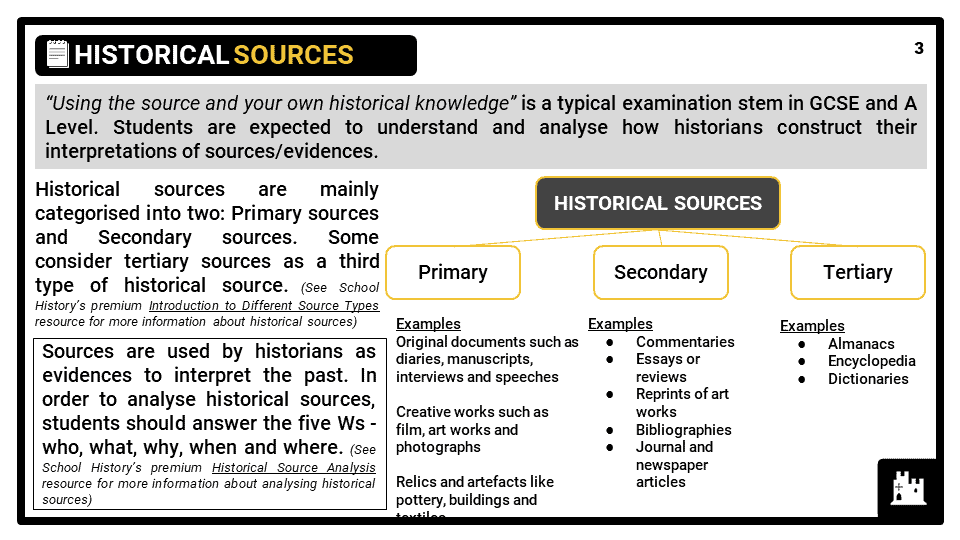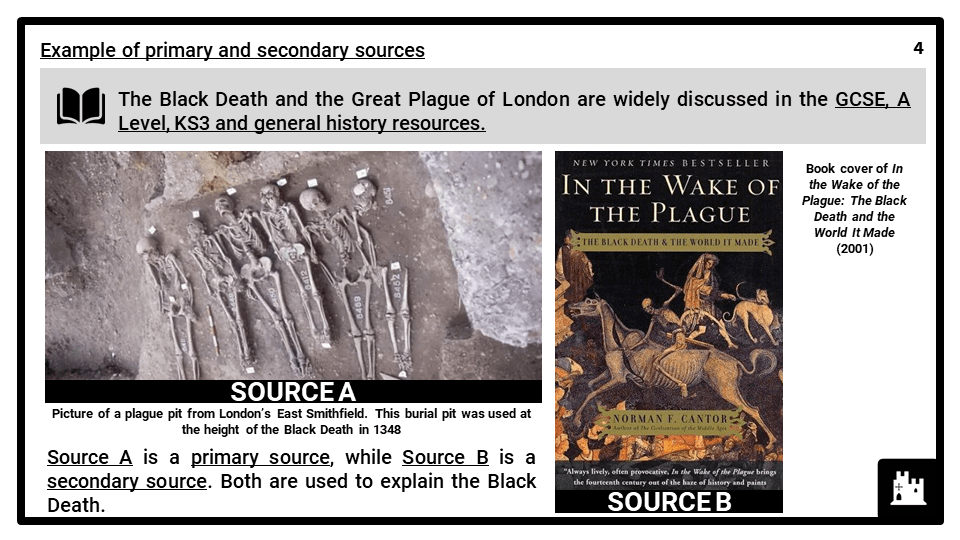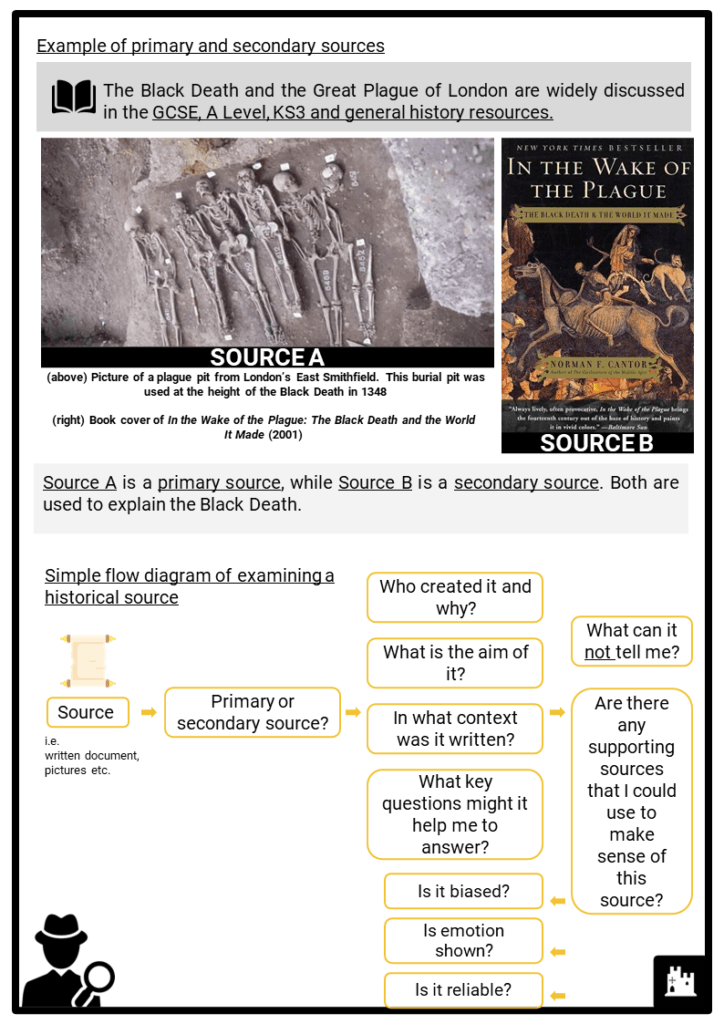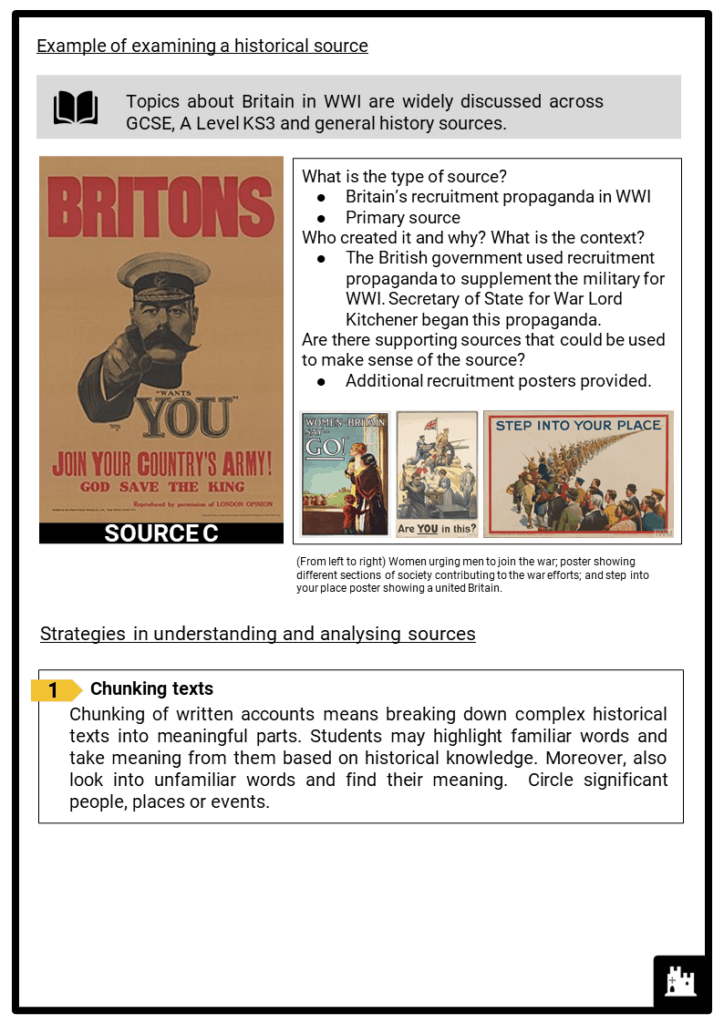Download Historical Key Skills: History Sources and Your Own Knowledge
Do you want to save dozens of hours in time? Get your evenings and weekends back?
Our worksheet bundle includes a presentation and printable worksheets. Perfect for both the classroom and homeschooling!
History Sources and Your Own Knowledge
This resource covers the concept of HISTORICAL SOURCES and YOUR OWN KNOWLEDGE as used in several topics, including:
- The Black Death
- Britain in the First World War
- The Vikings
- Crime and Punishment
- The Norman Conquest
- The Elizabethan Period
- Medieval Warfare
Excerpt
“Using the source and your own historical knowledge” is a typical examination stem in GCSE and A Level. Students are expected to understand and analyse how historians construct their interpretations of sources/evidences.
Historical sources are mainly categorised into two: Primary sources and Secondary sources. Some consider tertiary sources as a third type of historical source. (See School History’s premium Introduction to Different Source Types resource for more information about historical sources)
Sources are used by historians as evidences to interpret the past. In order to analyse historical sources, students should answer the five Ws - who, what, why, when and where. (See School History’s premium Historical Source Analysis resource for more information about analysing historical sources)
LEARNING OBJECTIVES
At the end of the module, students should be able to:
- Understand the significance of sources and own knowledge in historical assessments;
- Use different strategies in analysing and understanding historical sources; and
- Construct narratives using historical sources and own knowledge.
RESOURCE CONTENT
- Brief background of historical sources
- Simple flow diagram and example of examining historical sources
- Strategies in understanding and analysing sources
- Sources and your own knowledge
- Practice Assessment




